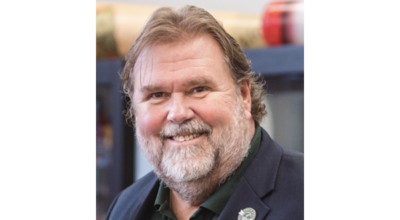The rest of the telephone story
Published 1:16 pm Thursday, March 6, 2014
In a previous column I wrote about telephones in Edwardsburg in the 1940s and early 50s.
And now the rest of the telephone story.
When the switchboard operator became obsolete the telephone went through radical changes during the 1950s. Most households shared a party line with their neighbors and telephone numbers consisted of the first two letters of the exchange followed by four numbers. Our exchange was Neptune so our number was NE4-560. By 1959 private lines were available and telephone numbers grew to seven digits and soon direct dialing and 663 and 699 were born.
But operators were still on the job!
To make a long-distance call it was necessary to dial O for operator and the operator came on the line. Then giving her a number she would dial the long distance number. There were two ways to make a long-distance call. It could be line-to-line or person-to-person. Person-to-person was of course more expensive than a line-to-line call but if your party was not home there was no charge. On a line-to-line long distance call there was a charge.
When I was in high school my girlfriend and I decided we needed jobs. So we went to the Indiana Bell Telephone Company office in South Bend and applied for a job as long distance operators. A test was required and it was necessary to read the list of cities that you might have to call. My girlfriend got the job, but I was hired to work as a cashier.
The offices had cashiers to take telephone bill payments and service representatives to handle any telephone problems. I was sent to the Mishawaka office.
Before we could start to work we had to go through training. For two weeks my girlfriend practiced on the long distance switchboard and for two weeks I had to learn to make change looking the customers in the eyes while smiling and counting the change into the customers hand and using a memorized script. We were both well trained.
My girlfriend worked weekends and some times all night. Some customers such as doctors needed all night service so private answering services were developed in 1955.
The dial tone was introduced and replaced the “number, please.” Long-distance calls with the customer dialing their own long-distance calls eliminated the need for long distance operators.
Telephones only came in one basic color, black. Telephone keypads did not come into existence until the 1960s.
A caller had to use a dial by placing finger into a notch on the dial that matched the number or letter of the phone number, and drag it clockwise. This was called a rotary dialed telephone.
Sometimes we elder folks forget all of the inventions that we have witnessed in our lifetimes and we forget that the youngsters have no idea of what was before the cell phone. This was evident when classrooms make field trips to the museum and they are fascinated with the dial telephones.
Share this old time information with your grandchildren and children. You’ll be surprised at the other subjects that will interest them.
Jo-Ann Boepple works at the Edwardsburg Area History Museum.





